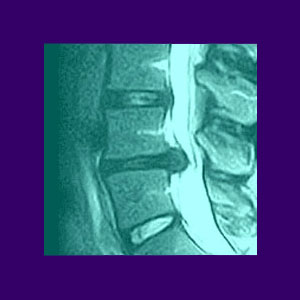
A chronic back injury is one of the reasons people give to explain ongoing or recurrent symptoms which endure long after the original trauma has healed. While it is very common to have some residual effects from an incredibly serious injury, it is not usual to suffer severe and lingering back pain symptoms from most traumatic occurrences. For those who have endured tremendous trauma, some of the following advice may certainly apply. However, for the vast majority of you reading this, who have endured minor or moderate injury, this article could get you on the fast track to enjoying back pain relief.
Let’s look deeper at the idea of chronic back injury and why most cases might involve unexpected circumstances.
Chronic Back Injury Information
Most people who have actual or perceived damage to their backs have been involved in weightlifting injuries, sports injuries, car accidents or some other type of traumatic event. Throughout your life, whenever you were hurt, your body did its primary job and healed just fine. The exception to this rule has been your chronic and stubborn back pain.
Sound familiar? You were probably diagnosed with a herniated disc, or several, due to your accident, although your doctor probably did not tell you that there is an excellent chance that these spinal issues were already there and completely asymptomatic for many years prior to the injury. Maybe you were diagnosed with degenerative disc disease or arthritic change due to your injury, but I bet your doctor did not tell you that you would have these things anyway, since they are normal, expected and universal; accident or not. These degenerative factors were probably already residing in your spine, as well.
Most people do not undergo spinal imaging unless they are in an accident or have severe pain. Therefore, most people do not know that intervertebral herniations, disc desiccation and arthritis are normal. These anatomical changes are not statistically linked to the occurrence of pain, but they are often implicated in being caused by accidents and being the source of symptoms once discovered via diagnostic testing. This is all is rather illogical from a scientific viewpoint, but it is business as usual in the dorsalgia treatment sector.
Chronic Back Pain from Injury Facts
The body is designed to heal and heal it will. Injure any part of your anatomy and the primary instinct demonstrated by your body will be to heal. What makes you think that some perceived or actual back injury is any different? It isn’t.
The fact remains that many of the spinal abnormalities blamed on injury are coincidental to the pain experienced and may not even be remotely caused by the suspected traumatic occurrence. The spine suffers herniated discs, degenerative discs disease, arthritis and other changes normally. The fact that you might have pain is often unrelated to these occurrences and this truth is well documented by a tremendous number of research studies which prove little or no correlation between spinal structural issues and existence of back pain. Of course, this is not a universal rule.
Some injuries do cause spontaneous herniations, fractures or other injuries in the vertebral column. These structural changes might be painful for a time, as any injury is likely to produce discomfort, spinal damage or not. However, time and treatment should still resolve all but the worst consequences of trauma and the body should not experience lasting pain for weeks, months or years after virtually any injury, barring the most catastrophic.
Chronic Back Injury Conclusions
Any chronic back injury, actual or perceived, has an inherent psychoemotional component called a nocebo. This effect can cause pain or perpetuate pain long past its actual physical expression. This is not an absolute law, but it certainly helps explain the incidence of lasting discomfort long after an injury, especially when compared to the illogical notion of chronic pain from a sports accident, getting in a fender bender or slipping on ice.
The best advice I can provide for those patients who have illogical amounts of pain due to minor or moderate traumas in their past is the following:
Misdiagnosis is usually involved. The spinal issues diagnosed may not even exist due to the trauma, and if they do, they might not be the actual source of pain.
The psychological effects of any trauma might not heal as fast or as easily as the physical damage. Keep this in mind, since most people with chronic pain have emotional contributors to their symptoms.
Finally, if treatment has been applied correctly, then the pain would be gone, regardless of the nature of the injury. If pain endures, then treatment has been unsuccessful. There is always a reason for this.
In my own extensive experience, I find that the actual underlying cause of treatment failure brings me back to my very first point: misdiagnosis. Getting some new diagnostic opinions is highly advised in these circumstances.





